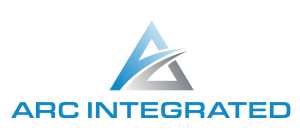How to Lead Extraordinary Meetings

Nothing speaks to creating peak performing cultures more than making sure, as a leader, you are able to generate effective, and productive meetings.
In this article, we will be sharing five tips on how you can lead extraordinary meetings. This is important to get a good grasp of because according to MIT, the average executive spends 23 hours a week in meetings.
Tip #1: Open With Connection (Use Tools When Needed)
There’s an old phrase that says connection before content which is a very important aspect of conducting great meetings. This phrase, in regards to meetings, is all about setting up connectivity between the participants before diving into the agenda for that particular meeting.
If creating that connection before starting your meetings is something that as a leader you struggle with, or don’t know how to do, my recommendation is to take advantage of the many tools that are available.
A really good tool that we recommend is The CHANGES Cards. This is a card deck full of questions based on seven different themes of our lived experience. You can use these cards to ask and answer some questions regarding different team members as a way to create a greater connection within the group. This immediate and quick connection that is generated between different individuals creates a much smoother experience during meetings. This is due to the fact that it enables others to be:
- Creative
- Vulnerable
- Communicative
Tip #2: Have An Agenda With Tight Boundaries
Having an agenda before going into a meeting seems like an extremely obvious thing to do for most leaders. Still, the problem with most meeting agendas that we often see is that there are no tight boundaries associated with them.
A really good way around this is to set a timer on your phone. You can do this by setting up time intervals within each topic. So if the timer is set up for 15 minutes, when the time is up, regardless of where you are in the conversation, you move on to the next topic.
One of the biggest issues in these meetings is not only that there are no boundaries in place, but they are also not being enforced. I can promise you that when they are, more positive things will come out of the meetings and that more will be getting accomplished.
Tip #3: Have Good Recipes
I was recently looking at a book that I had recommended for a client called Principles by Ray Dalio. It goes into detail about principles (or recipes) for living. I strongly believe that these principles, when taken into the sphere of meetings, are no different.
For example: Did well, learn, and do differently is a principle that you can use to debrief an incident. If there is a challenge that your team faces (with a customer, vendor, client, etc.) you as a leader should conduct a debrief with the three ingredients to the recipe mentioned above.
- You should look at what was done well
- Follow that with what was learned from it
- Finally what should be committed to doing differently for the future
Using this recipe is a really important tool to have as a leader because it will increase meeting productivity, engagement, and overall team wellbeing. This connectivity is crucial to an organization’s success because research shows that employee engagement has been defined as an emotional and intellectual commitment to the organization.
Tip #4: Make The Meeting Relevant for All in Attendance
Many of us have been in meetings that didn’t actually require us to be there and it doesn’t feel good at all. Surprisingly, this is actually a very common aspect in many meetings. Taking it even a step further, time spent in meetings (especially bad meetings), can increase employee stress, fatigue, and perceived workload.
The way to solve the issue of feeling like an hour was just robbed from their day, is to ensure that whoever you are inviting has some purpose for being in the meeting. This could mean that they have:
- Information to share
- Data to collect
- Relevant action items
Everyone attending the meeting should be there for a reason and not because it seems like the thing to do to fill their schedule. This ultimately will reduce resentment in company culture.
Tip #5: End The Meeting With Appreciation
Our final tip on how to lead extraordinary meetings is to end every meeting with appreciation. This is a simple, yet very underutilized tool that I think every leader should learn to incorporate.
The simple way to think about this is to ask a question to the group to share their thoughts on what they believed was a moment, person, or idea that emerged in the meeting that they would like to appreciate. What this does is allows a little bit of psychological priming so that when they leave the meeting, it makes everyone feel like it was advantageous to them in some aspect. This is done by highlighting:
- Opportunity
- Strength
- Learning
I really believe that ending on a good note and making sure others feel that the meeting was valuable is a critical aspect of a successful meeting.
If you found this article helpful and want to learn more about the topic you can watch the video version of 5 Tips to Lead Extraordinary meetings.
As always if you have any questions or concerns you can schedule a time to connect.
Be well,
Michael
Resources:
- Blog Post: 5 Ways Leaders Can Support Employee Goals
- Blog Post: How to Effectively Have Difficult Conversations as a Leader
- Video: 5 Ways Leaders Can Support Employee Goals
- Quiz: Discover How Your Leadership is Influencing Your Productivity, Performance, and Income
